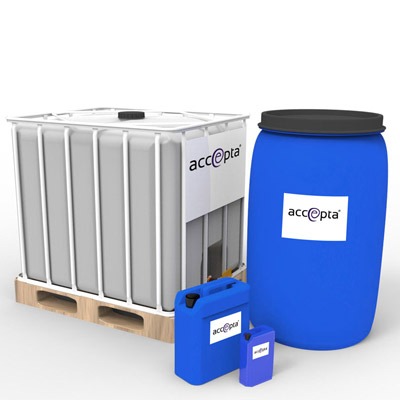Usual Difficulties in Foam Control and Exactly How to Get rid of Them Effectively
Usual Difficulties in Foam Control and Exactly How to Get rid of Them Effectively
Blog Article
A Comprehensive Guide to Executing Foam Control Solutions in Your Operations
Reliable foam control is a vital element of functional effectiveness that typically goes overlooked. Understanding the ins and outs of foam generation can significantly affect both productivity and product quality. By checking out crucial variables such as application compatibility and personnel training, organizations can maximize their foam monitoring efforts.
Recognizing Foam Challenges
Foam challenges are a significant problem throughout numerous markets, influencing operational efficiency and product top quality. The development of too much foam can hinder processes such as mixing, transport, and storage space, causing raised downtime and waste. In industries like food and beverage, pharmaceuticals, and petrochemicals, foam can interfere with assembly line, creating product variances and contamination threats.
In addition, foam can obstruct tools functionality, bring about expensive repairs and upkeep. For instance, in wastewater treatment, foam can disrupt clarifier procedures, leading to reduced treatment performance and regulatory conformity issues.
Understanding the underlying reasons of foam generation is crucial for reliable management. Aspects such as surfactants, temperature changes, and frustration levels can all add to foam production. Determining these elements permits markets to execute targeted approaches that reduce foam development while maintaining item honesty.
Types of Foam Control Solutions

Mechanical services include the usage of gadgets such as foam skimmers or defoamers. Chemical remedies, on the various other hand, include the application of defoaming agents-- substances that interrupt the foam structure, leading to its collapse. Foam Control.
Finally, functional methods focus on process modifications. This might entail modifying devices criteria, such as temperature and stress, or changing the circulation rates of fluids to reduce foam generation. Executing good housekeeping methods can likewise alleviate foam development by reducing impurities that contribute to foam security.
Picking the proper foam control remedy entails evaluating the details needs of the procedure, consisting of the kind of process, the qualities of the products included, and safety factors to consider.
Choosing the Right Products
Choosing the appropriate foam control items requires a complete understanding of the particular application and its unique difficulties. Variables such as the type of foam, the environment in which it takes place, and the preferred outcome all play crucial functions in item choice. Foam Control. For example, in markets like food handling, it is necessary to select food-grade defoamers that follow security laws while successfully managing foam.
In addition, think about the thickness of the liquid where the foam problem exists. Some items are developed for low-viscosity applications, while others are customized for thicker fluids. Compatibility with existing procedures is an additional important facet; the selected foam control agents need to integrate seamlessly without interfering with total operations.
An additional crucial variable is the technique of application. Some items may call for dilution, while others can be applied straight. Examining the convenience of use and the needed dose can provide insights right into the product's performance and cost-effectiveness.
Application Techniques
Successful application approaches for foam control remedies call for a methodical method that lines up item choice with functional requirements. The very first step includes a detailed evaluation of the procedures where foam happens, determining find more particular areas that necessitate intervention. By engaging cross-functional teams, consisting of engineering, production, and top quality guarantee, companies can collect understandings that educate the option of one of the most effective foam control products.
Following, it is important to establish clear purposes for foam decrease, ensuring that these objectives are possible and quantifiable. This might entail specifying acceptable foam degrees and the timelines for execution. Educating workers on the residential or commercial properties and application approaches of selected foam control agents is equally essential, as appropriate usage is important for optimal results.
Additionally, incorporating foam control options into existing operations calls for careful planning. Organizations needs to create a phased application plan, permitting for modifications based on initial end results. Normal interaction and comments loops with personnel involved in the process will assist in timely problem-solving and cultivate a society of continual renovation. Eventually, a well-structured method will improve functional efficiency while successfully managing foam-related difficulties.
Monitoring and Assessing Efficiency
Surveillance and reviewing the effectiveness of foam control services is necessary for ensuring that executed methods produce the wanted outcomes. This procedure entails organized information collection and evaluation to assess the performance of foam control agents and methods. Trick performance indicators (KPIs) should be developed prior to application, enabling a clear standard versus which to determine progression.

Assessing efficiency additionally requires periodic reviews of foam control procedures and agent effectiveness. This can be completed via sampling and testing, enabling drivers to establish if current solutions are fulfilling functional needs. It is critical to get comments from team members who interact with these systems daily, as their insights can expose functional nuances that measurable information might ignore.

Eventually, an organized tracking and analysis structure assists determine required modifications, making sure that foam control options remain efficient, inexpensive, and straightened with business goals.
Conclusion
In verdict, effective foam control options are essential for enhancing operational effectiveness and preserving product top quality. An extensive understanding of foam difficulties, integrated with the selection of ideal products and implementation strategies, promotes the effective management of foam generation.
Carrying out great housekeeping techniques can additionally minimize foam development by lowering pollutants that add to foam security.
Selecting the best foam control products requires a comprehensive understanding of the particular application and its special challenges (Foam Control).Successful application approaches for foam control remedies call for an organized technique go right here that aligns product option with operational demands.In conclusion, effective foam control options are crucial for enhancing functional performance and preserving item high quality. A thorough understanding of foam obstacles, combined with the choice of ideal products and application approaches, promotes the effective management of foam generation
Report this page